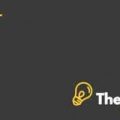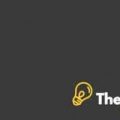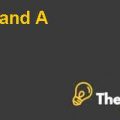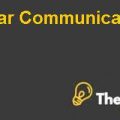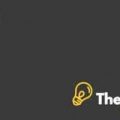
Q4: Given the changes above, what did they do to react and was it appropriate?
Answer:
After analyzing the series of wrong decisions and blunders like HomeSide and MLC, the management at the NAB changed its vision by making changes in its current strategy. By the end of April 2002, the company initiated and announced a strategic review called positioning for growth and finally ended its ten-year master plan that was based on global expansion. According to the company’s management, the company has shifted its focus from globalization to Australasia and niche opportunities in the United Kingdom. The basic purpose was to bring improvements in its wealth management business and to get better productivity from its existing operations.
The company’s new strategic move was the response faced by the bank in terms of wrong and faulty decision making. As a result of this, the CEO of NAB decided for branch closures and job cuts. By the end of 2003, NAB developed a new strategy called the national story that was based on five key strategies. The new strategy was based on building and managing portfolio of businesses for the shareholder’s return. The company includes a winning performance culture based on a great place, people and winning performance. The management made a new purpose and vision for the company as well that was based on growth through excellent relationships. Their initiative taken by NAB was not appropriate as it was based on laying off staff. Along with this, the company tried to grow organically which was not possible after the MLC acquisition and sale of HomeSide.
Q5: Risk is part of a winning strategy, what did National Bank do with respect to risk?
Answer:
Many organizations are looking for strategies that are based on risk-based methodology. NAB can deal with risk by reducing probability of risk, or it can make a reduction or limit the significances of the risks involved in this. Furthermore, the company needs to adapt its culture to include and manage the risk factor in the new strategy. The bank took no such initiative to mitigate the risk, and that was the biggest reason behind the company’s strategic failure. Moreover, the senior management at NAB was less concerned and even careless about risk management process. Before the trading desk disaster, the competitors also warned that the foreign exchange risk was out of control but the management did nothing to manage foreign exchange risk.
In addition to this, internal risk management systems apparently missed what was going on, as did NAB’s senior management through one of the traders who said that the senior management was aware that the bank’s trading had been breached but again, they did nothing to mitigate it. Furthermore, 800 breaches of NAB’s value-at-risk limits were made in December 2001 but ignored by supervisors. These are the factors that have proved that the management at NAB did nothing to mitigate the risk. Moreover, there was a complete lack of back-office controls and management supervision.
Q6: What measures indicated, if any, that things were not going well?
Answer:
The company has gone through various changes from 2000 to 2006 and made a list of strategic blunders that has put NAB in jeopardy. There were several indicators that were clearly an alarming signal for NAB’s management regarding the things not going well, but they showed carelessness that in turn resulted in big strategic failures. The sale of Michigan National was the clear indicator that things will not be perfect in the future as it was a good performer with the state of the art CRM program.
In addition to this, company lacks in terms of risk management was the clear indicator that things will go worse than expected. Moreover, the company should learn from MLC acquisition but after that, NAB purchased HomeSide, and the company made multibillion-dollar errors in interest rate calculations in its operations that would lead to $3.6 billion write-down. The write-down related mainly to hedging losses and a fall in the value of the mortgage servicing rights caused by increased refinancing activity. This announcement stripped $6.6 billion from the company’s market capitalization. NAB’s share price fell 13 per-cents to $28.90, and the HomeSide loss represented 87 per cent of NAB’s estimated 2001 full year profit. These were few of the major indicators to realize that things were not going well...............................
This is just a sample partial case solution. Please place the order on the website to order your own originally done case solution.

